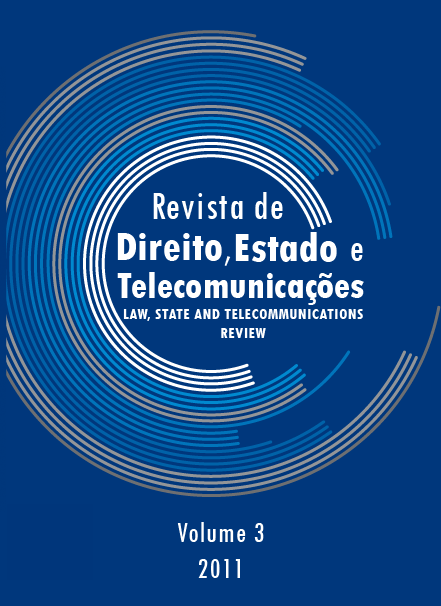The Role of Internet Exchange Points in Broadband Policy and Regulation
DOI:
https://doi.org/10.26512/lstr.v3i1.21666Keywords:
policy, regulation, broadband, Internet, exchange pointAbstract
New investments in Internet backbone infrastructure and the need to exchange traffic with existing backbones, on a peering or transit basis, point to the emergence of a key infrastructure element ”“ the Internet Exchange Point (IXP). There are very few IXPs available today, considering the huge increase in the number of autonomous systems advertised. IXPs deployed by research networks demonstrate that a substantial increase in their number would improve the Internet topology, increase connectivity, reduce latency and the cost of traffic exchange. Additionally, IXPs can be efficient locations from which to offer system services. This paper discusses possibilities of regulatory action to stimulate the implementation of IXPs and to ensure that their benefits are widely shared.
Downloads
References
BAUER, J. (2010). Regulation, Public Policy, and Investment in Communications Infrastructure. In: Telecommunications Policy 34: 65-79.
BERKMAN CENTER FOR INTERNET & SOCIETY. (2009). Next Generation Connectivity: A Review of Broadband Internet Transitions and Policy from Around the World. Harvard University.
CAMBINI, C.; JIANG, Y. (2009). Broadband Investment and Regulation: A Literature Review. In: Telecommunications Policy 33: 559-574.
CISCO. The Keystone of Internet Economy, Next Generation Interconnection. In: Cisco Networkers (2001-2005).
ERG. (2007). Project Team on IP-Interconnection and NGN: Final Report. European Regulators Group.
EURO-IX. (2009). Report on European IXPs ”“ 2009. European Internet Exchange Association.
FARATIN, P. [et al.]. (2007). Complexity of Internet Interconnections: Technology, Incentives and Implications for Policy. In: The 35th Annual Telecommunications Policy Research Conference.
GETSCHKO, D.; MOREIRAS, A. (2008). Os Pontos de Troca de Tráfego, o PTT Metro e a internet brasileira. In: poliTICS 1: 15-21.
KENDE, M. (2000). The Digital Handshake: Connecting Internet Backbones. In: FCC OPP Working Papers 32.
MARCUS, J.; ELIXMANN, D. (2008). The Future of IP Interconnection: Technical, Economic, and Public Policy Aspects. WIK Consult, European Commission.
YOO, C. (2010). Innovations in the Internet's Architecture that Challenge the Status Quo. In: Journal on Telecommunications and High Technology Law 8: 79-99.
Downloads
Published
How to Cite
Issue
Section
License
By submitting this paper to the Law, State and Telecommunications Review,
I hereby declare that I agree to the terms of the Creative Commons Attribution 4.0 International (CC BY 4.0).


